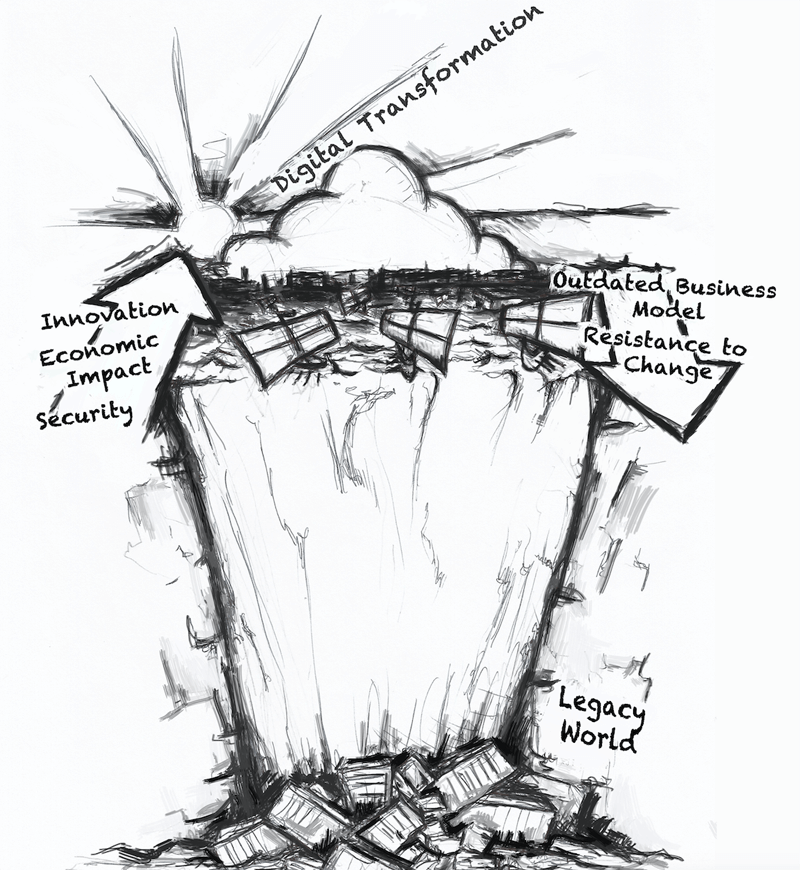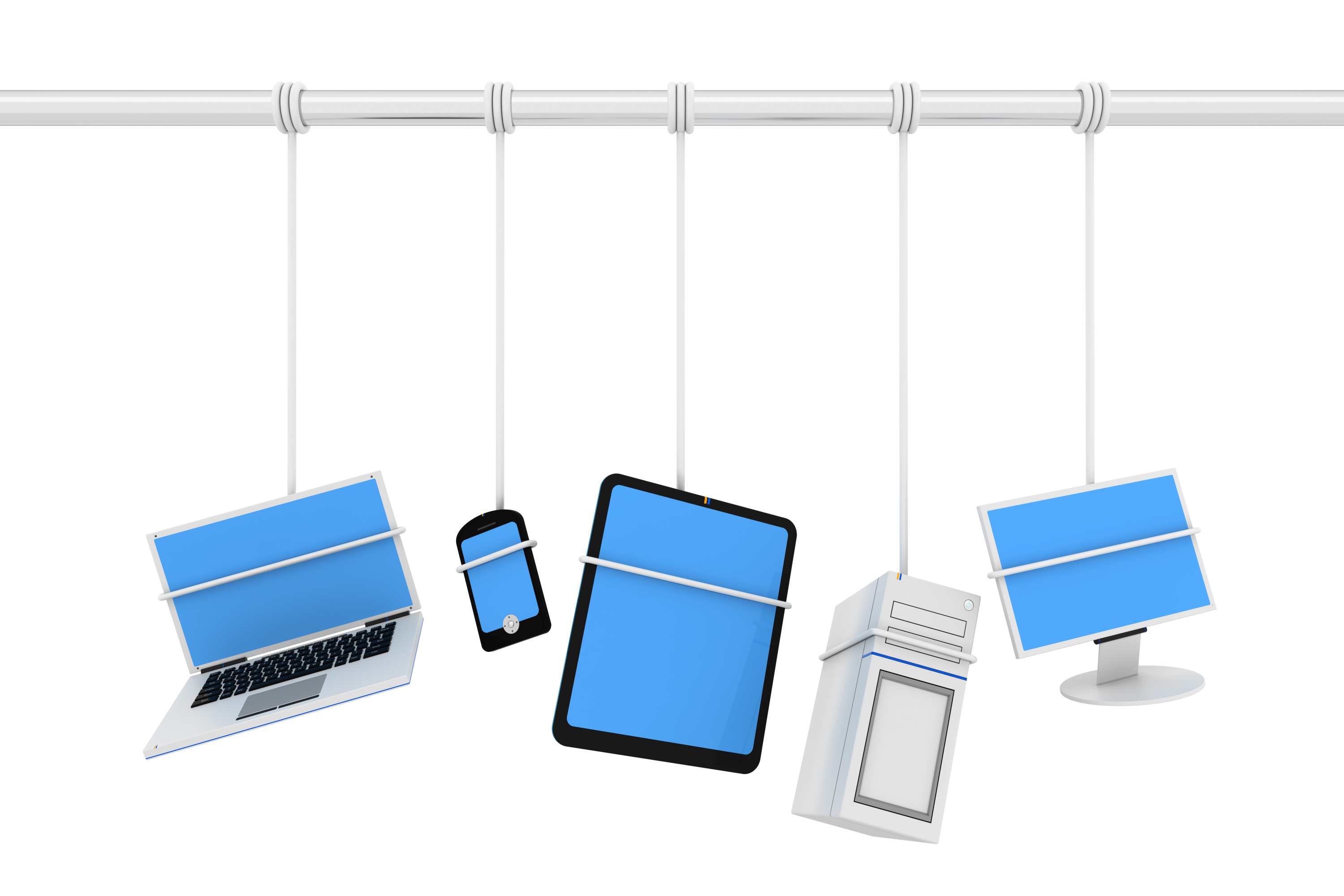Make Windows 10 Migration a Top Stop in Your Digital Transformation Journey
“Digital transformation” is a big IT industry buzzword that’s being heavily used within the enterprise as part of the effort to rationalize transformation and leverage the financial benefits that should come from that transformation. Like most buzzwords, though, it can mean “all things to all people. Organizations with well-defined business practices should be able to accomplish a digital transformation easily….right?
Thinking about this takes me back to my introduction into the world of IT over 20 years ago. Our office was awash with Wyse 50 terminals and Dot matrix printers running on a SCO Unix platform. The ‘IT guy’ at the company also happened to be a company director. He was the only employee with email access. All email communication went directly through him. If an email arrived for your attention, it would be printed off and delivered to your desk.
In hindsight, it’s easy to recognize how that IT director misconstrued ‘this new email thing.’ Instead of treating email like a new and revolutionary technology that transformed communication, my company forced email to fit into an archaic but well-understood process. That inability to see beyond the familiar turned email into a productivity-killer instead of the productivity-builder it actually is.
How long can your existing strategy survive?
Holding on to a familiar world in the face of change, like the scenario described above, has a profound impact on a business. Alarmingly, in a recent study, nearly half (44%) of UK business leaders feel that their existing models will cease to exist in 5 years—and yet only half (55%) of private sector business decision makers think their senior leadership are willing to disrupt the business to make the changes necessary to survive past that five-year mark.
To pivot, innovate, and survive, organizations must examine their current practices to ensure they are properly aligned with their digital transformation strategy. Take time now to identify outdated practices that will obstruct the positive outcomes that come with transformation.
Your existing Windows OS Migration strategy is not good enough!
Consider one of the biggest challenges in IT today—migrating the enterprise desktop estate to Windows 10.
But…this is the same challenge we had when migrating from XP to Windows 7, right?
NO! The move to Windows 10 is much more profound. With Windows 7 having less than 3 years remaining of extended support, organizations that fail to adopt the right migration strategy will see that decision directly impact their ability to innovate.
Even laggards are realizing the critical necessity of migrating from Window 7. The pressure is on as they realize that the depth of ransomware and other malicious content that is waiting to attack vulnerable endpoints (which are all your endpoints!) once support ends.
Top challenges you must plan for in your migration
Recent statistics indicate that migrations are slowing down for some of the very reasons we are discussing in this post.
But there is no such thing as standing still. You have two choices: move forward with a strategy that gives you a platform for future success, or head backwards into a legacy world constrained by the inertia of the present.
What exactly are the forces that could be propelling or deflecting you from a successful migration? A metaphor that keeps running through my head is an organization catching the tide of change towards the rewards of Digital Transformation (Innovation, Security, Economic Gains, Cloud Integration), or adrift in the still waters of We’ve Always Done It This Way (Outdated Business Models, Resistance to Change). I sketched this vision below to highlight just how to navigate your Windows Ship to the New World of Windows 10.

Here are some of the key forces that can push you away from a successful Windows 10 migration strategy:
- Users resist change
A recent survey from Dimensional Research found that a third of users are confused by the new Windows 10 interface. Do you want to add missing settings, configuration and data to that problem?
We can help analyze your existing environment to ensure the required application privileges, settings and user data are available post-migration.
- Manual migration processes
Productivity is massively affected by a manual process. How do you manage this at scale? Timing depends on what user data you need to capture. You might migrate one user in 10 minutes. Another may take 2 hours. In either case, you won’t know you’re done—until you’re done.
We can help you collect user settings & data while the user is working so each migration goes faster.
- Replace, re-Image or upgrade?
You probably have a mixed environment, some incompatible devices, new Windows 10 devices introduced during hardware refreshes, and existing devices not suitable for an upgrade or re-image. Are you ready for every scenario?
We can help you replace, re-image, or upgrade without impacting the user by abstracting the user’s settings and data from the endpoint prior to migration.
Avoid planning and executing your Windows 10 migration using the same processes that you or your predecessor used to migrate your organization to Windows 7. Adopt a new approach! Full speed ahead!
Want to learn more? Watch our State of Windows 10 Migration webinar Wednesday, May 31.

